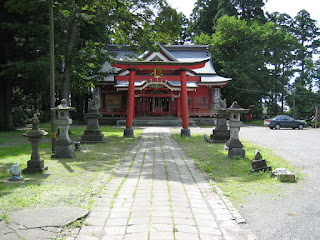Pushing
The most common technique in sumo is pushing. There are more than seven listed techniques that, with small distinctions, all amount to pushing an opponent out of the ring or down to the clay. Pushing or push-out can be misleading terms, so the translators for the sumo federation usually use force-out instead. This is meant to capture the sense of impact as well as the follow-up thrusting that is required to drive a man weighing between 260 and 400 pounds seven feet backwards against his will. We’ll bend to convention and use force-out from here on.The tachiai, the crouched position that wrestlers start from, is vital to a successful force-out. A wrestler must reach the point of maximum momentum a split second before striking his opponent. This is easier said than done, as the space that a wrestler has to work with is often less than a step. If a wrestler comes out of the tachiai too slowly, his opponent can usually win simply by halting his momentum and causing a misstep for an easy fall. If both wrestlers come out slowly, they generally end-up deadlocked in the center of the ring and have to go to the belt. If, however, the taichiai is executed just right, it will have the double effect of forcing an opponent up and back, while also creating space for the wrestler to come in low and either get a hold of the belt or simply continue thrusting and pushing.
Belt Techniques
 Top level sumo is all about the belt. Top flight wrestlers have to be effective on the belt, both in getting a dominant hold and initiating the throw. As the belt is connected to another sumo wrestler, power plays as much as role in maintaining a grip as technique does in making a successful throw. Once a wrestler gets an inside grip or outside grip on a belt, he has many techniques to choose from. Using the belt to twist and upset his opponents balance, the wrestler can sweep out his opponents leg, force down his opponents head, try for a more dominant two-handed grip, and so on.
Top level sumo is all about the belt. Top flight wrestlers have to be effective on the belt, both in getting a dominant hold and initiating the throw. As the belt is connected to another sumo wrestler, power plays as much as role in maintaining a grip as technique does in making a successful throw. Once a wrestler gets an inside grip or outside grip on a belt, he has many techniques to choose from. Using the belt to twist and upset his opponents balance, the wrestler can sweep out his opponents leg, force down his opponents head, try for a more dominant two-handed grip, and so on. If a wrestler can’t get a hand on the belt, he can try to execute a beltless throw using the same techniques and counting on the opponents balance to give out first. This can be a double-edged sword as flesh is more slippery than a belt, and a miss leaves the wrestler facing the wrong way with his opponent behind him. The most effective beltless throws involve catching an opponent’s arm at the elbow and using the locked joint as a lever to move him. Because of the high risk of failure, most wrestlers use beltless throws as a last resort.





